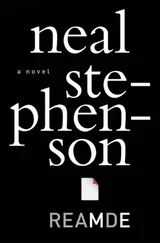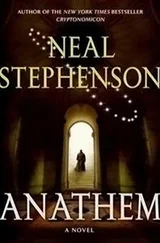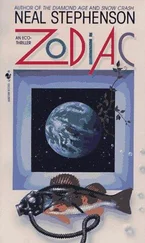3. Use a passphrase to order the deck. This method uses the Solitaire algorithm to create an initial deck ordering. Both the sender and receiver share a passphrase. (For example, “SECRET KEY.”) Start with the deck in a fixed order; lowest card to highest card, in bridge suits. Perform the Solitaire operation, but instead of Step 5, do another count cut based on the first character of the passphrase (19, in this example). (Remember to put the top cards just above the bottom card in the deck, as before.) Do this once for each character. Use another two characters to set the positions of the jokers. Remember, though, that there are only about 1.4 bits of randomness per character in standard English. You're going to want at least an 80-character passphrase to make this secure; I recommend at least 120 characters. (Sorry, but you just can't get good security with a shorter key.)
Here's some sample data to practice your Solitaire skills with:
Sample 1: Start with an unkeyed deck: A(clubs) through K(clubs), A(hearts) through K(hearts), A(diamonds) through K(diamonds), A(spades) through K(spades), A joker, B joker (you can think of this as 1—52, A, B). The first ten outputs are:
4 49 10 (53) 24 8 51 44 6 33
The 53 is skipped, of course. I just put it there for demonstration. If the plain text is:
AAAAA AAAAA
then the cipher text is:
EXKYI ZSGEH
Sample 2: Using keying method 3 and the key “FOO,” the first fifteen outputs are:
8 19 7 25 20 (53) 9 8 22 32 43 5 26 17 (53) 38 48
If the plain text is all As, the cipher text is:
ITHZU JIWGR FARMW
Sample 3: Using keying method 3 and the key “CRYPTONOMICON,” the message “SOLITAIRE” encrypts to:
KIRAK SFJAN
Of course, you should use a longer key. These samples are for test purposes only. There are more samples on the website, and you can use the book's PERL script to create your own.
SECURITY THROUGH OBSCURITY
Solitaire is designed to be secure even if the enemy knows how the algorithm works. I have assumed that Cryptonomicon will be a best seller, and that copies will be available everywhere. I assume that the NSA and everyone else will study the algorithm and will watch for it. I assume that the only secret is the key.
That's why keeping the key secret is so important. If you have a deck of cards in a safe place, you should assume the enemy will at least entertain the thought that you are using Solitaire. If you have a bridge column in your safe deposit box, you should expect to raise a few eyebrows. If any group is known to be using the algorithm, expect the secret police to maintain a database of bridge columns to use in cracking attempts. Solitaire is strong even if the enemy knows you are using it, and a simple deck of playing cards is still much less incriminating than a software encryption program running on your laptop, but the algorithm is no substitute for street smarts.
The first rule of an output-feedback mode stream cipher, any of them, is that you should never use the same key to encrypt two different messages. Repeat after me: NEVER USE THE SAME KEY TO ENCRYPT TWO DIFFERENT MESSAGES. If you do, you completely break the security of the system. Here's why: if you have two ciphertext streams, A + K and B + K, and you subtract one from the other, you get (A + K) – (B + K) = A + K – B – K = A – B. That's two plaintext streams combined with each other, and is very easy to break. Trust me on this one: you might not be able to recover A and B from A – B, but a professional cryptanalyst can. This is vitally important: never use the same key to encrypt two different messages.
Keep your messages short. This algorithm is designed to be used with small messages: a couple of thousand characters. If you have to encrypt a 100,000-word novel, use a computer algorithm. Use shorthand, abbreviations, and slang in your messages. Don't be chatty.
For maximum security, try to do everything in your head. If the secret police starts breaking down your door, just calmly shuffle the deck. (Don't throw it up in the air; you'd be surprised how much of the deck ordering is maintained during the game of 52-Pickup.) Remember to shuffle the backup deck, if you have one.
There's quite a lot of it, but it's far too complicated to reproduce here. See http://www.counterpane.com, or write to
Counterpane Systems
1711 North Ave #16
Oak Park, IL 60302
I recommend my own book, Applied Cryptography (John Wiley & Sons, 1996), as a good place to start. Then read The Codebreakers, by David Kahn (Scribner, 1996). After that, there are several books on computer cryptography, and a few others on manual cryptography. You can subscribe to my free e-mail newsletter at http://www.counterpane.com/cryptogram.html or by sending a blank e-mail message to crypto-gram-subscribe@ chaparraltree.com. It's a fun field; good luck.
1.1940 being a good year to begin experimenting with venereal diseases in that the new injectable penicillin was just becoming available.
2.As the Nipponese were invariably called by Marines, who never used a three-syllable word where a three-letter one would do.
3.“Hypo” is a military way of saying the letter H. Bright boy Waterhouse infers that there must be at least seven others: Alpha, Bravo, Charlie. etc.
4.Assuming, provisionally, that Alan is wrong and that human brains are not machines.
5.An evident paradox, but nothing out of the ordinary—being out of America has just made this kind of thing more obvious to Randy.
6.A deprecatory term for a fighting man not good enough to be in the Corps.
7.Men with experience in Asia use the word “Nip.” The Colonel's use of “Jap” suggests that his career has been spent in the Atlantic and/or Caribbean.
8.He has no hard data to back this up; it just seems like a cool idea.
9.He has made up his mind that he will use the English words rather than making a spectacle of himself by trying to pronounce the Qwghlmian ones.
10.According to the E.Q., derived from lichen.
11.Cantrell alludes to the fact that Plan One brought them a couple of million dollars in seed money from a venture capital outfit in San Mateo called the Springboard Group.
12.Shaftoe had had nothing to do for the last couple of weeks except play Hearts using KNOW YOUR ENEMY cards, so he could now peg model numbers of obscure Kraut observation planes.
13.The first one, mì, meaning “secret” and the second one, fú, having a dual connotation meaning, on the one hand, a symbol or mark, and on the other hand, Taoist magic.
14.Ever since the four-wheel Enigma was broken.
15.Baudot code is what teletypes use. Each of the 32 characters in the teletype alphabet has a unique number assigned to it. This number can be represented as a five-digit binary number, that is, five ones or zeroes, or (more useful) five holes, or absences of holes, across a strip of paper tape. Such numbers can also be represented as patterns of electrical voltages, which can be sent down a wire, or over the radio waves, and printed out at the other end. Lately, the Germans have been using encrypted Baudot-code messages for communications between high-level command posts; e.g., between Berlin and the various Army group headquarters. At Bletchley Park, this category of encryption schemes is called Fish, and the Colossus machine is being built specifically to break it.
Читать дальше





